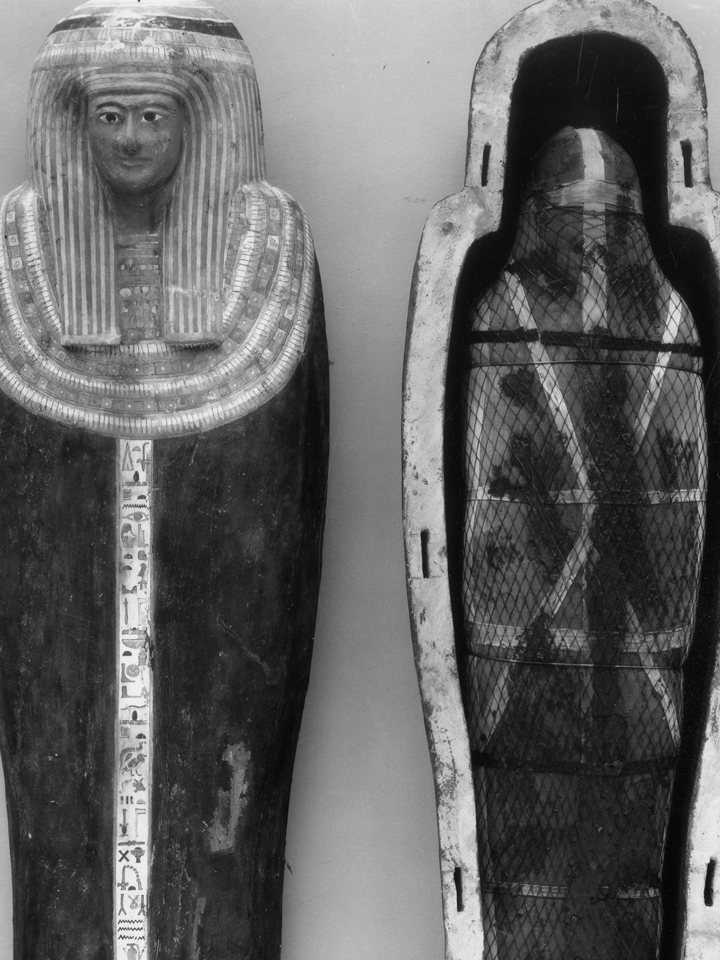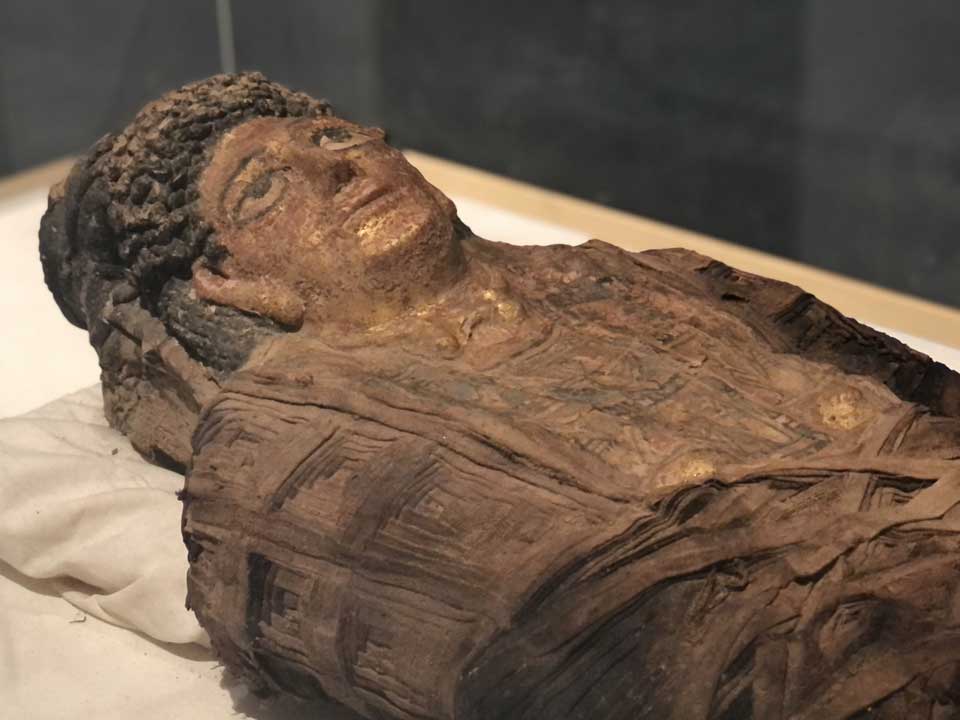Late Period, Greek, and Roman Egypt Mummification


The Late Period saw an improvement in wrapping styles, but a decline in quality for embalming. No longer was the brain removed, and, at times, the organs were left in the body. When they were removed, they would once again be placed in canopic jars and the body was filled with cotton and resin.
Then, in c. 332 BCE, Alexander the Great invaded. Egypt was absorbed into the Persian Empire, leading to the decline of most Egyptian cultural traditions. Mummification, however, was still practiced.
The wrappings of mummies from the Greek period are notoriously complex, favoring diamond- and square-shaped patterns, beads, and vibrant colors. Limbs were wrapped separately. In the beginning of the period, organs were removed and placed in tall wooden chests, then the body was packed with linen. Later, however, the practice of removing organs was fully abandoned. Also abandoned was the practice of adorning the body with amulets, all except for a carved scarab, which was left over the heart.
Finally, a full-body painting of the deceased was applied on the mummy’s wrappings. This practice evolved during the Roman Period, when the traditional mummy mask was abandoned in favor of a lifelike painting of the face of the deceased, referred to as “Faiyum portraits”.
As time went on, Egypt adopted more and more beliefs from surrounding cultures. The introduction of Christianity placed even less value on Egyptian religion. Mummification became less about the spiritual need to preserve the body, and more of a status symbol. It became more important to be a beautiful corpse than it was to be well-preserved. Because of this, Roman mummies are typically highly decorated, with elaborate wrappings, while their embalming is hurried and mediocre.
When Islam arrived in Egypt around 641 CE the ancient Egyptian tradition of mummification fell out of practice entirely.

At-A-Glance
- Late Period mummification ended the practice of removing the brain, though organs were removed.
- Greek mummifications used elaborate wrappings, but stopped removing organs entirely.
- Following the emphasis on the mummy’s external appearance, as well as the lack of interest in the mummy’s ritual purpose, Romans began painting Faiyum portraits on their mummies.


